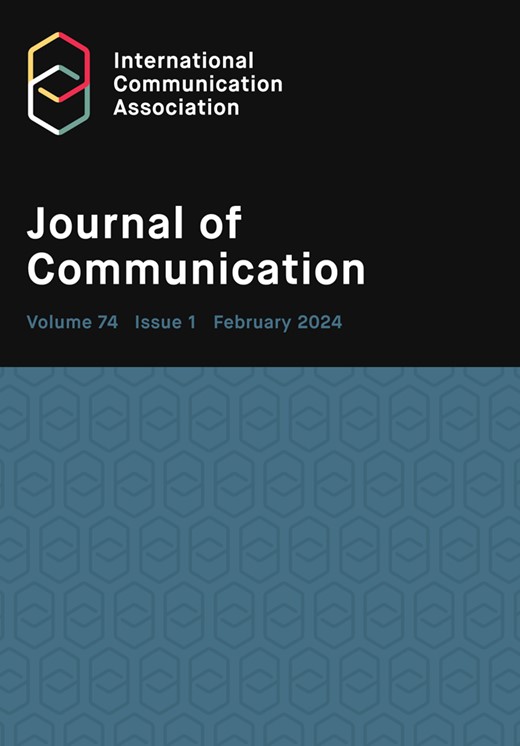行动中的指标:社交媒体指标如何影响Facebook上的新闻生产
IF 5.5
1区 文学
Q1 COMMUNICATION
引用次数: 1
摘要
社交媒体指标可以让媒体获得对受众偏好的细致、实时的了解,因此可以用来决定未来优先播放哪些内容。我们在Facebook的背景下测试了这一机制,通过使用主题建模和纵向数据分析的大型数据集,包括美国公民使用的主要媒体发布的所有帖子(N≈2.23M, 2015-2019)。我们发现,虽然受众参与对未来新闻报道的总体影响是显著的,但个别媒体对不同类型主题的反应存在很大的异质性。少数右翼媒体比其他媒体更有可能对受众参与指标做出回应,但它们关注的是党派政治话题,而不是娱乐导向的内容。我们的研究揭示了社交媒体平台是如何塑造新闻实践的,并对美国新闻业的未来健康产生了影响。本文章由计算机程序翻译,如有差异,请以英文原文为准。
Metrics in action: how social media metrics shape news production on Facebook
Social media metrics allow media outlets to get a granular, real-time understanding of audience preferences, and may therefore be used to decide what content to prioritize in the future. We test this mechanism in the context of Facebook, by using topic modeling and longitudinal data analysis on a large dataset comprising all posts published by major media outlets used by American citizens (N≈2.23M, 2015–2019). We find that while the overall effect of audience engagement on future news coverage is significant, there is substantial heterogeneity in how individual outlets respond to different kinds of topics. A handful of right-wing media outlets are more likely to respond to audience engagement metrics than other outlets, but with partisan politics topics and not with entertainment-oriented content. Our research sheds new light on how social media platforms have shaped journalistic practices and has implications for the future health of journalism in the United States.
求助全文
通过发布文献求助,成功后即可免费获取论文全文。
去求助
来源期刊

Journal of Communication
COMMUNICATION-
CiteScore
11.60
自引率
5.10%
发文量
41
期刊介绍:
The Journal of Communication, the flagship journal of the International Communication Association, is a vital publication for communication specialists and policymakers alike. Focusing on communication research, practice, policy, and theory, it delivers the latest and most significant findings in communication studies. The journal also includes an extensive book review section and symposia of selected studies on current issues. JoC publishes top-quality scholarship on all aspects of communication, with a particular interest in research that transcends disciplinary and sub-field boundaries.
 求助内容:
求助内容: 应助结果提醒方式:
应助结果提醒方式:


